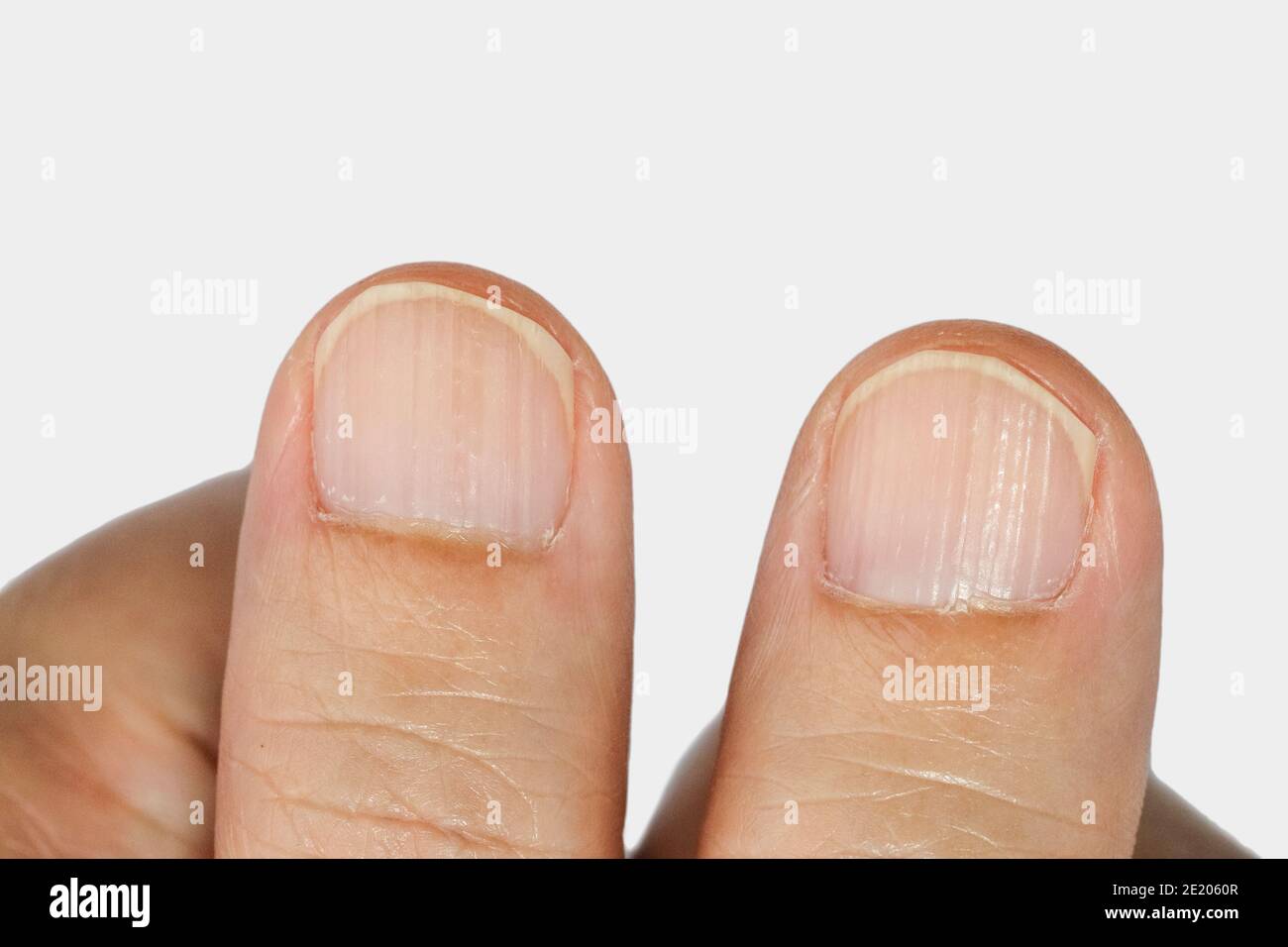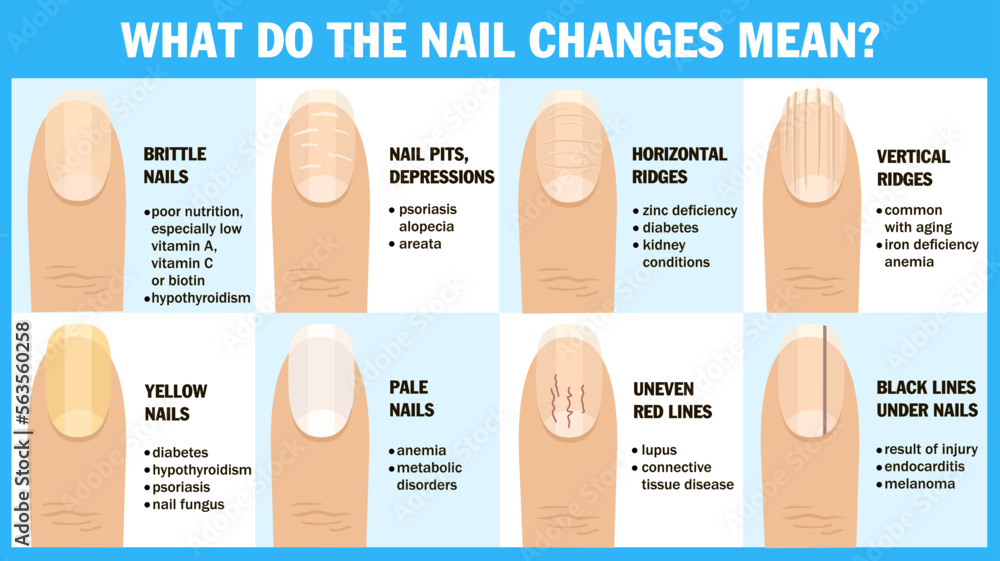Ever glanced at your fingernails and noticed subtle lines etched into their surface? These ridges, often faint yet persistent, can be more than just a cosmetic quirk they might be whispering secrets about your overall health.
As a dermatologist, I frequently encounter patients concerned about changes in their nail appearance, and vertical nail ridges are among the most common complaints. These lines, technically known as longitudinal striations, extend from the cuticle to the tip of the nail and can appear due to various factors. While often harmless, it's essential to understand what they might signify, and when you should seek medical advice.
The most prevalent type is vertical ridges, presenting as fine lines originating at the cuticle and stretching to the nail's tip. These are often associated with aging; research in 2022 has emphasized this connection. As we age, cell turnover within the nail changes, leading to the increased prominence or number of these vertical lines.
- Eternals 2021 60fps Search Issues Find Answers Here
- Filmyfly Safe To Stream Reviews Alternatives More Warning
However, age isnt the only culprit. Nutritional deficiencies, particularly in iron, zinc, calcium, B complex vitamins, or vitamin C, can contribute to the development of vertical nail ridges. Iron deficiency anemia, specifically, is a known trigger for these ridges, and can even cause the nails to become concave. Deficiencies in zinc, vitamin A, vitamin D, and biotin can also impact nail health.
Dr. Rodney adds that nail trauma, or growths and tumors under the nail can also cause vertical ridges. Certain medications, such as chemotherapeutics, can also cause vertical ridges in nails.
In contrast, horizontal ridges, also known as Beau's lines, tell a different story. These lines, extending side to side across the nail, can indicate issues such as malnutrition, serious nail injury, or systemic illnesses.
- Ice Spice Real Name Revealed From Isis Gaston To Rising Star
- Yinyleon Dead Or Alive The Truth Search Fails Explained
According to an April 2015 study in the Indian Dermatology Online Journal, deficiencies in folic acid, iron, and protein can cause central ridges. Additionally, conditions like psoriasis, diabetes, and thyroid disorders can manifest in nail changes, including horizontal ridges.
Yellow Nail Syndrome, another condition, may present with a lack of cuticle and detachment of the nail from the nail bed. It can also be related to lung diseases like chronic bronchitis or lymphedema, a condition causing swelling in the hands, arms, feet, and legs.
It's crucial to be vigilant for other concerning symptoms that accompany nail ridges, such as changes in nail color, texture, thickness, pain, or discomfort. If such symptoms appear, consult your healthcare provider promptly.
While nail ridges are often harmless, it's important to consider the overall picture. Vertical ridges are typically benign, often associated with aging or minor nutritional imbalances. However, horizontal ridges are more likely to signal an underlying medical condition. Therefore, any significant changes in your nails should be discussed with a healthcare professional to rule out any serious issues.
While horizontal or vertical ridges on nails and vitamin deficiencies are rarely correlated with one another, that doesn't mean that they don't have an effect. For example, you may have a zinc, iron, or vitamin d deficiency.
Dr. says, "We see [vertical ridges], brittleness, and easy breaking [or] chipping a lot in people who have specifically iron deficiency anemia".
Nail ridges are generally not harmful, but can bear different implications. Vertical ridges often signify aging, whereas horizontal ridges might indicate issues such as malnutrition, significant nail trauma, or beaus lines.Lack of essential nutrients impacts nail health.
Causes of vertical ridges in nails are vitamin or mineral deficiencies (such as iron, zinc, calcium, b complex vitamins or vitamin c) medication reactions (such as chemotherapeutics)
Vertical ridges, commonly seen in aging individuals, are often linked to the natural aging process but may also indicate nutritional deficiencies, such as iron deficiency or biotin deficiency. In contrast, horizontal ridges, sometimes referred to as beaus lines, can signify trauma to the nail or a serious health condition like thyroid. Considered normal, may signal dehydration or nutrient deficiencies.
Biotin, in particular, has been found to be beneficial for nail health, although more research is needed to fully understand its effects.
Onychorrhexis is a condition that affects your nails, causing them to develop ridges and splitting. Instead of a relatively smooth fingernail, a person with onychorrexis will have grooves or ridges in their nails. Nail ridges might mean a vitamin b12 deficiency ridges in your nails can also be warning signs of a vitamin b12 problem.
Your nails need a proper amount of iron in them. Signs of a vitamin deficiency in your nails include color changes, cracks and grooves.
Lines running from the bottom of the nail to the tip are the most common form of ridges in fingernails, affecting about 20 percent of adults.
If your fingernails change color or you develop horizontal nail ridges, consult your health care provider.Vertical nail ridges extend from the cuticle to the tip of the nail. With age, vertical nail ridges may become more numerous or prominent because of changes in cell turnover within the nail.
The reliability of nail ridges as indicators of systemic health is a subject of ongoing debate. Diet, age, and medications are all common culprits behind a b12 deficiency.
Most white streaks or spots do not indicate vertical ridges or streaks. Vertical nail ridges are typically harmless. Horizontal nail ridges (beau's lines) are more likely to be associated with a medical condition, such as psoriasis, diabetes, thyroid disease, and others.
Onychorrhexis is a condition that causes vertical ridges to form on the fingernails. These ridges often look like thin grooves running vertically along the length of your nail.
Nail ridges are small, raised lines on the nail that run either vertically or horizontally. What do vertical nail ridges mean? They often look like thin grooves running vertically along the length of your nail.
Known as beaus lines, often indicate illness or trauma. Some nail concerns can indicate health issues, including vitamin deficiencies and chronic conditions.
Vertical ridges generally appear later in life and run from the tip of your fingernail to the cuticle.
There are also horizontal ridges or beaus lines. "if there is a temporary break in nail growth, this results in a visible ridge. Also known as beaus lines".
Vertical ridges, or longitudinal striations, are commonly found.



Detail Author:
- Name : Taya Glover
- Username : smills
- Email : pacocha.lexus@yahoo.com
- Birthdate : 1982-06-21
- Address : 6609 Wisozk Oval North Gladys, NC 53887
- Phone : +15736535177
- Company : Kovacek-Cummerata
- Job : Motor Vehicle Inspector
- Bio : Et laboriosam consequuntur quia sint. Eum et sequi error labore eius delectus quia. Qui autem aliquid voluptatum dolor quia.
Socials
instagram:
- url : https://instagram.com/vwisoky
- username : vwisoky
- bio : Ut sunt possimus ipsa neque. Ut voluptates illo animi similique ut.
- followers : 5346
- following : 1791
tiktok:
- url : https://tiktok.com/@vergie.wisoky
- username : vergie.wisoky
- bio : Vel quis odit ut beatae aperiam molestiae iure.
- followers : 4048
- following : 422
facebook:
- url : https://facebook.com/vergie_wisoky
- username : vergie_wisoky
- bio : Qui quos voluptas rerum consequatur et omnis.
- followers : 1785
- following : 1515